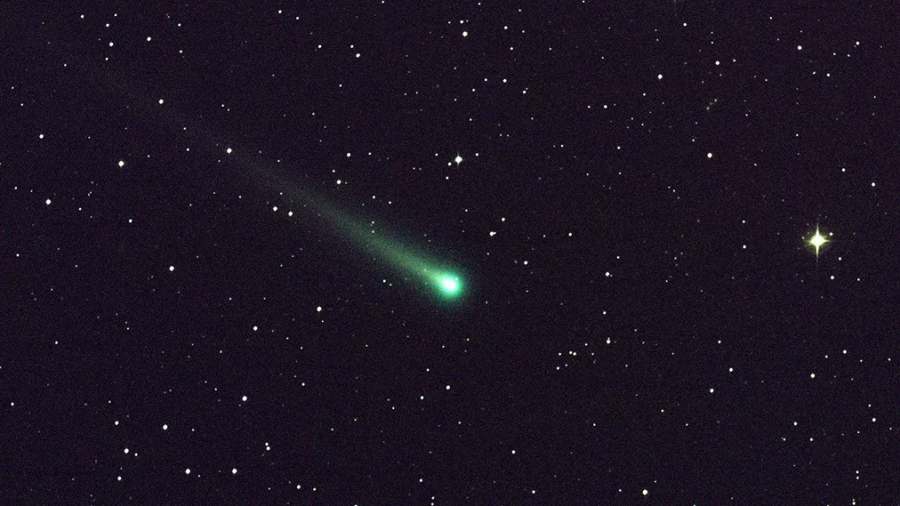![]() (Image credit: NASA/MSFC/Aaron Kingery)
(Image credit: NASA/MSFC/Aaron Kingery)
Wed 01 February 2023:
On Wednesday, a green-hued comet is expected to be the most visible to stargazers as it passes Earth and the sun for the first time in about 50,000 years.
According to NASA, the dirty snowball was discovered less than a year ago and last passed close to Earth during Neanderthal times.
It will be closest to Earth on February 2 at 42 million kilometres distance from the planet before going far away into the solar system. The comet, which is still leaving behind a dazzling tail, has been photographed in the skies above the Indian Astronomical Observatory in Hanle (Ladakh). The comet was travelling at a relative speed of 2,07,000 kilometres per hour as it raced between the orbits of Earth and Mars.
Green comet location and time
One can try to locate the comet at a height of around 20 degrees between Saptarshi Mandal (the huge bear) and the Pole star. Binoculars and a telescope will give you a better view of the comet. As the comet moves away from Earth, its brightness will progressively diminish. Since moonlight makes items in the sky appear substantially dimmer, the best time to see it is right after moonset in the early morning hours. Although comet brightness is hard to predict, this one is probably going to be the brightest in 2023.
COMET WITH A GREENISH AURA THAT APPEARS ONCE EVERY 50,000 YEARS VISIBLE FROM EARTH
What are Comets?
Comets are snowballs that orbit the solar system and are comprised of frozen gases, rocks, and dust. These celestial bodies are modest while they are frozen, but when they approach the Sun, they become heated and spew gases and dust, creating a giant luminous head that is larger than most planets. The comet’s orbital period was estimated to be close to 50,000 years, according to Space.com. This indicates that it will be coming within 50,000 years of Earth next month.
NASA’s comment on Green Comet
According to the National Aeronautics and Space Administration (NASA), the Neanderthal Comet will move to the northwest over the course of January, and between February 1 and 2, it will make its closest approach to Earth. According to NASA’s “What’s Up” blog, comets are notoriously unpredictable, but if this one maintains its current trend in brightness, it will be simple to see with binoculars and may even become visible to the unaided eye under dark skies. To avoid light pollution, stargazers might like to go to dark, scarcely populated areas to get a better view of the trudging comet.
NASA plans to observe the comet with its James Webb Space Telescope, which could provide clues about the solar system’s formation.
The Virtual Telescope Project at the Bellatrix Astronomical Observatory in Ceccano, Italy will have a live feed accessible here.
SOURCE: INDEPENDENT PRESS AND NEWS AGENCIES
___________________________________________________________________________________________________________________________________
FOLLOW INDEPENDENT PRESS:
TWITTER (CLICK HERE)
https://twitter.com/IpIndependent
FACEBOOK (CLICK HERE)
https://web.facebook.com/ipindependent
Think your friends would be interested? Share this story!





